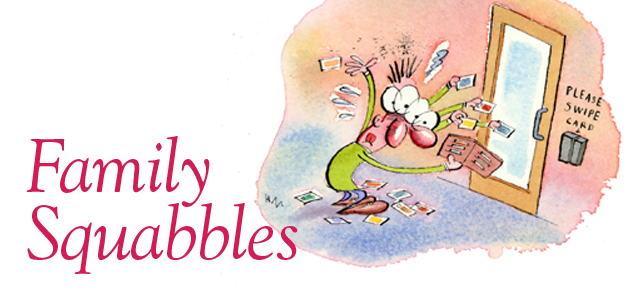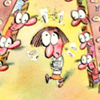
Related Stories
Web Extra: More Squabbles
In response to our call for "Kenyon family squabbles," alumni sent in lots of memories of controversies. There wasn't space to print them all. Here, then, in no particular order, are a few squabbles that didn't make it into print.
Sacred Ground
Back in the rough-hewn early days, piles of debris cluttered the hilltop and hogs rooted among the tree stumps. ("Local food," one presumes.) Kenyon being Kenyon, it's likely that somebody objected when our first technocrat president, David Bates Douglass (a civil engineer), destroyed the ambiance by laying out Middle Path and turning the campus into a park. But there was no Collegian or e-mail then, so we have no record of any protest.
Re-Evaluate!
The details are complicated. But the fact is that student frustrations were mounting in the mid-1970s, in part because a number of popular professors left Kenyon, having failed to win contract renewals or tenure.
Sacred Gravel

If the apocalypse ever does come to Gambier (and, as with everything else, we'll have to wait until it's already passé on the coasts), the cause will be a proposal to pave Middle Path.
Turf War
The mother of all Kenyon battles, at least in the modern era, erupted in the fall of 1989, when the trustees' Commission on Student Life proposed ending the housing privileges traditionally enjoyed by fraternities.
Girls?!

The saga of coeducation at Kenyon, at least its first chapter, could be read as a twisted Garden of Eden story, although it's not clear whether the old all-male preserve would figure as a bizarrely blissful paradise or a vale of puerility. Or whether change brought an end of innocence, or of ignorance.
The CLOK Strikes
The first female students arrived in Gambier as something like second-class citizens, having been admitted not to Kenyon but to that odd, artificial, and ultimately unworkable entity called the Coordinate College.
The Parking Riot of '64

It happened on a fine April weekend in 1964, and all because the Village of Gambier had decided to get tough on crime—that is, on traffic and parking violations.
The Catwalk

Surely one of the most ennobling of all Kenyon experiences was when you entered the Great Hall at mealtime, gliding forward amid your fellow scholars, with Chaucer and Shakespeare glowing in stained glass overhead and a cheese casserole of indeterminate odor awaiting you in its glistening servery vat.
Swipe Cards

Lock the dorms and destroy kenyon's atmosphere of openness and trust? When the proposal went public in October 2007, e-mails lit up the campus network, most of them enraged.

 Delicious
Delicious Facebook
Facebook StumbleUpon
StumbleUpon Digg
Digg reddit
reddit